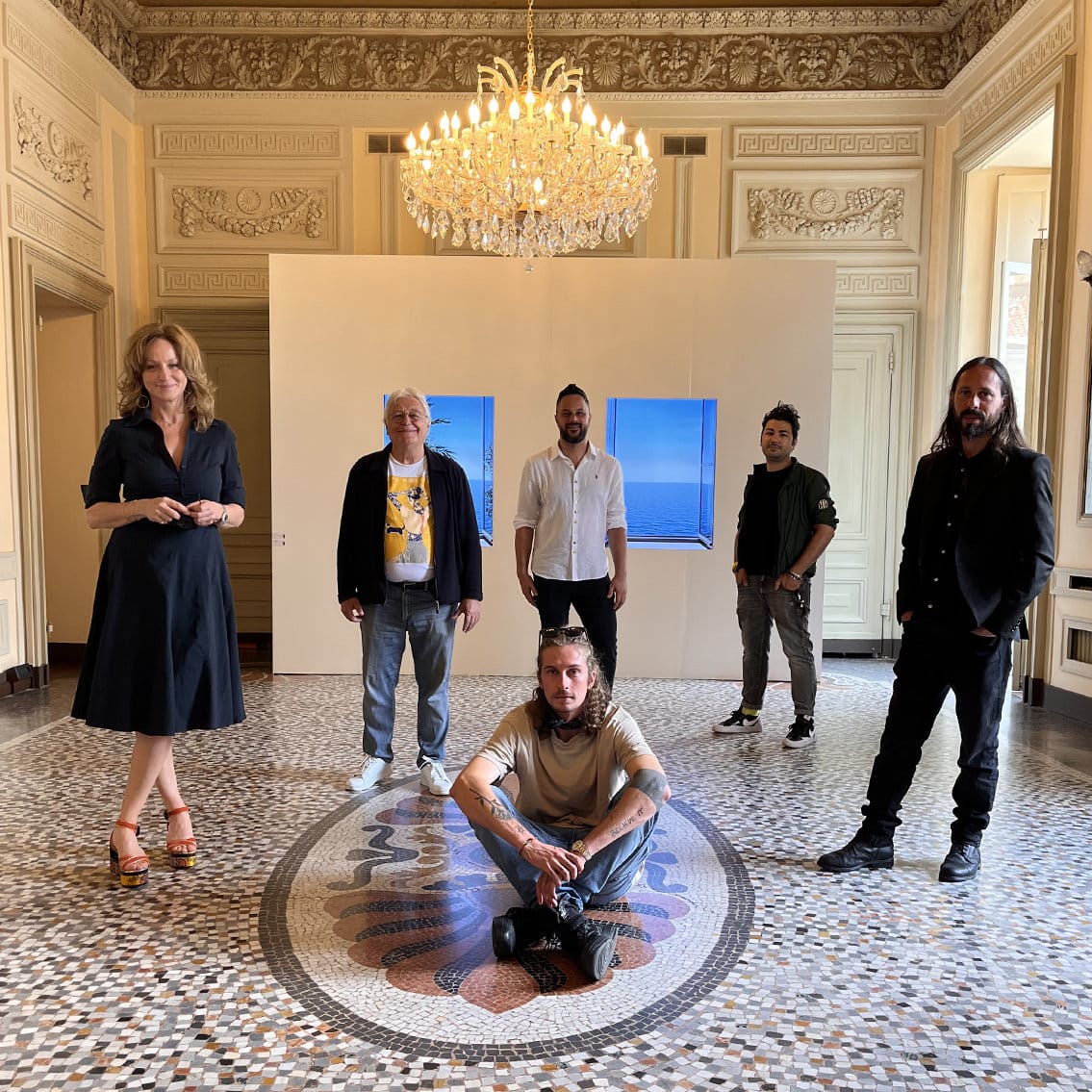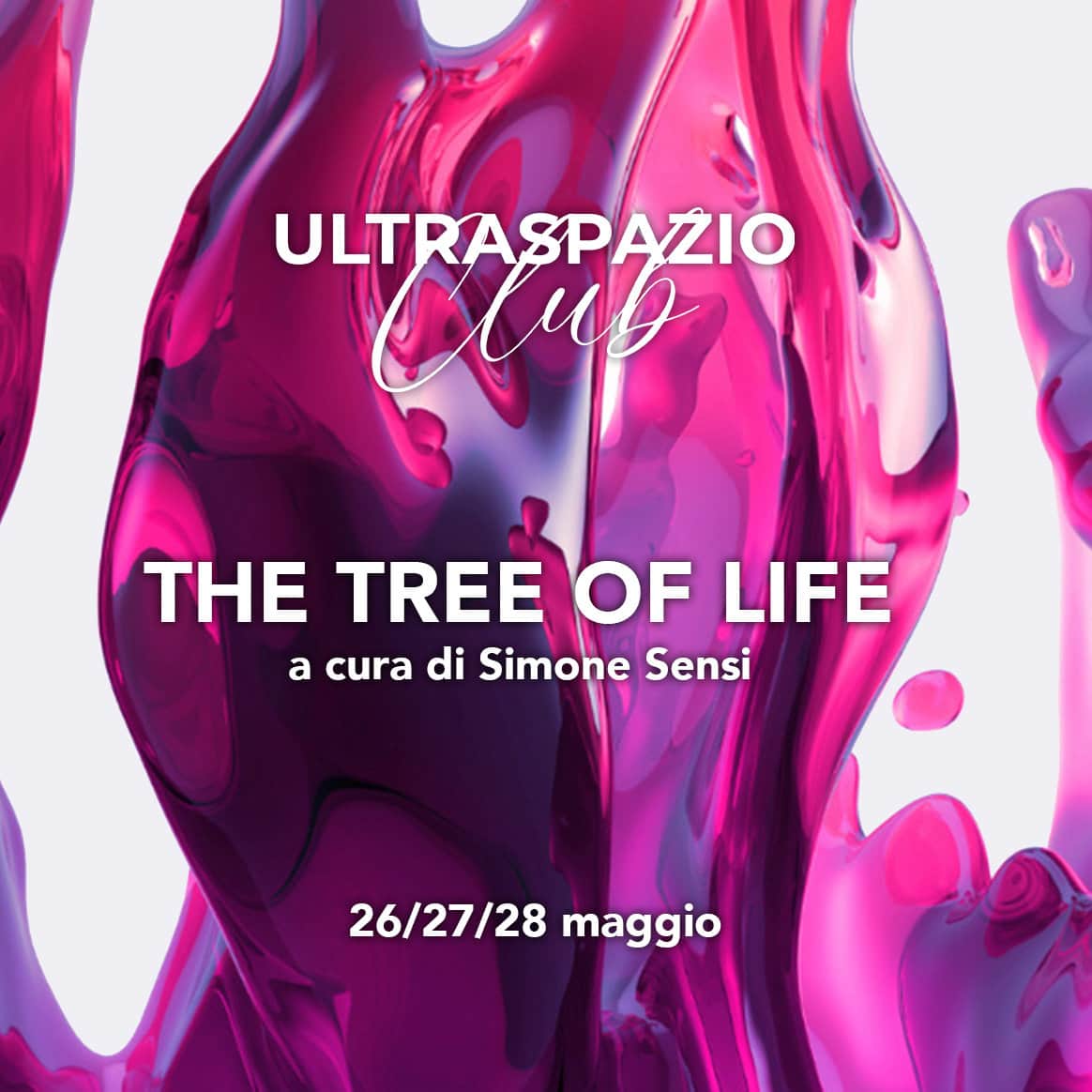
Ultranews #06
THREE DAYS TO TELL
Ultraspazio Club hosted the art exhibition “The Tree of Life” at the end of May, which used digital scenarios and artificial intelligence to explore how humans could become through the hybridization of human and artificial elements.
The exhibition was curated by Simone Sensi.
Ultraspazio Club is the flagship place of Ultraspazio, an entity whose founding principle is summarized by the headline, “The coworking space where, when, and how you want.” This declaration pushes for the transformation of its “storefront” into a mutable space. It is a hybrid reality capable of hosting both a think tank focused on change and serving as the perfect venue for a brand that has a challenge to share.
Transforming it into an art gallery focused on the most advanced frontiers of innovation for just three days was a successful test to verify its potential. “The Tree of Life” spoke about birth and rebirth, change, and “contaminations,” utilizing the creativity of four artists: Andrea Crespi, Giuseppe Lo Schiavo, Leonardo Petrucci, and Mitch Laurenzana. These artists brought their artistic poetry together with artificial intelligence.
Thus, a narrative emerged, filled with mixtures, fusions, and coexistence among humans, nature, and technology—three elements often in conflict that Ultraspazio Club attempted to explore, not only as a possible coexistence but also as a path and, perhaps, a destiny.
The exhibition welcomed guests into a completely dark room, creating a sharp contrast between the real world and the poetic world. The room was populated with video portraits born from the dialogue between the words of the artist Mitch Laurenzana and the attempt of artificial intelligence to translate those words into faces and personalities.
The author started with a provocative consideration: “Today, we all want to be beautiful, but what would happen if some entities took possession of us (as often happens in dystopian novels and TV series) and a ‘bug’ or a transmission error drew the state of mind of invaded people on their new faces instead of their external appearance?” This provocative starting point gave birth to the (in)HUMAN: beings or entities that (like a reverse “Picture of Dorian Gray”) showed the aesthetic reflection of our anxieties and fears to the world. It resulted in a gallery of stylistically hybrid portraits capable of exposing the psychological and social tensions and contradictions that surround us.
The second room regained natural light to restore the beauty of the eighteenth-century environment characterized by the portrait of the “master of the house,” Count Vittorio Amedeo Costa Carrù della Trinità, displayed (in a rather eccentric manner) on the ceiling. Roman artist Lorenzo Petrucci challenged time and history by utilizing divination-provocation. He took possession of the portrait of the nobleman who built the palace to imagine, in alliance with artificial intelligence, how that portrait could have transformed after two hundred and fifty years of social and cultural changes, wars, economic and pandemic crises, triumphs, and challenges.
The result was a portrait that, while maintaining the same posture as the original, became a hybrid between a man and a phoenix—a mythical creature symbolizing strength and resilience. Once again, it echoes Oscar Wilde’s “The Picture of Dorian Gray,” but this time undergoing a spectacular mutation.
Andrea Crespi used the Sala dei Quattro Elementi to reinterpret a work by René Magritte: “The Lovers,” painted in 1928, in which a white sheet covered the heads of two people who were about to kiss, preventing their desire from transforming into fusion. The artist reinterpreted the work by placing a beautiful woman (perhaps an “ex-human”) and a robotic figure in front of it, leaving the doubt about the future plausibility of this relationship to the imagination of the audience.
To console us, the artist accompanied this leap into the future with an enormous Michelangelo’s David called “David dei Cento” (David of the Hundred). The artwork was created in a 1:1 scale by one hundred children from

